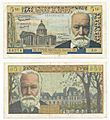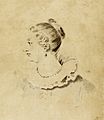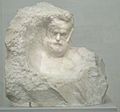Victor Hugo facts for kids
Quick facts for kids
Victor Hugo
|
|
|---|---|

Victor Hugo, circa 1880
|
|
| Born | Victor Marie Hugo 26 February 1802 Besançon, France |
| Died | 22 May 1885 (aged 83) Paris, France |
| Occupation | poet, playwright, novelist, essayist, human rights campaigner |
| Literary movement | Romanticism |
| Signature | |
Victor Marie Hugo (born February 26, 1802 – died May 22, 1885) was a famous French poet, playwright, and novelist. He was also a statesman and worked to protect human rights. He played a very important part in the Romantic movement in France, which was a style of art, literature, and music that focused on emotion and individualism.
Hugo first became well-known in France for his poetry, his novels, and his plays. His most famous poetry collections are Les Contemplations and La Légende des siècles. Outside of France, his novels Les Misérables and Notre-Dame de Paris (also known as The Hunchback of Notre Dame) are his most famous works.
When he was young, Hugo held traditional views and supported the king. As he grew older, he became more open-minded and supported the idea of a republic, where citizens elect their leaders. His writings often explored the political and social issues of his time, as well as new artistic ideas. He is buried in the Panthéon, a famous building in Paris where many important French people are laid to rest.
Contents
Life of Victor Hugo
Victor Hugo was born in 1802 in Besançon, France. His parents were Joseph Léopold Sigisbert Hugo and Sophie Trébuchet. He had two older brothers, Abel and Eugène.
Hugo lived in France for most of his life. However, during the rule of Napoléon III, he had to leave the country. He lived in Belgium in 1851, then moved to Jersey in 1852. From 1855 to 1870, he lived on the island of Guernsey. He also returned to Guernsey for a short time in 1872-1873. After 1859, he chose to stay in exile.
Hugo's early childhood was shaped by big events in France. The French Revolution had overthrown the king, and Napoléon Bonaparte became Emperor two years after Hugo was born. Later, the old monarchy was brought back when Hugo was 17.
His parents had very different ideas about politics and religion. His father was a high-ranking officer in Napoléon's army. He was a republican and didn't believe in God. He saw Napoléon as a hero. His mother was a strong Catholic and supported the royal family. Because his father was an officer, the family moved often. These travels taught Victor Hugo a lot. He remembered a trip to Naples and Rome when he was only five years old.
His mother, Sophie, separated from her husband for a time in 1803 because life was difficult. She settled in Paris and was in charge of Hugo's education. Because of her influence, Hugo's early writings praised the king and religious faith. However, after the French Revolution of 1848, Hugo changed his mind. He began to support republicanism and freethought, which means thinking freely and not always following traditional beliefs.
When he was young, Victor Hugo secretly got engaged to his childhood friend, Adèle Foucher. His mother did not approve.
He married Adèle in 1822, after his mother passed away. Their first child, Léopold, died as a baby in 1823. They had four more children: Léopoldine, Charles, François-Victor, and Adèle. Hugo published his first novel, Han d'Islande, in 1823. His second, Bug-Jargal, came out three years later. He also published five more poetry books between 1829 and 1840. These books helped him become known as one of the greatest poets of his time.
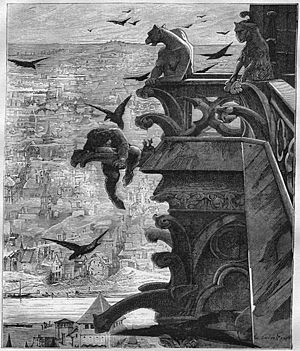
A very sad event for Hugo was the death of his oldest daughter, Léopoldine. She was only 19 when she died in 1843, shortly after her marriage. She drowned in the River Seine when a boat overturned. Her heavy skirts pulled her down. Her husband also died trying to save her. Victor Hugo was traveling when he heard the news from a newspaper. He wrote about his deep sadness in his poem À Villequier:
Hélas ! vers le passé tournant un oeil d'envie,
Sans que rien ici-bas puisse m'en consoler,
Je regarde toujours ce moment de ma vie
Où je l'ai vue ouvrir son aile et s'envoler !
Je verrai cet instant jusqu'à ce que je meure,
L'instant, pleurs superflus !
Où je criai : L'enfant que j'avais tout à l'heure,
Quoi donc ! je ne l'ai plus !
Alas! looking back with a longing eye,
with nothing on earth to comfort me,
I keep seeing that moment in my life
when I watched her open her wings and fly away!
I will see that moment until I die,
that moment—too painful for tears!
when I cried out: "The child I had just now—
what! I don't have her anymore!"
After this, he wrote many poems about Léopoldine's life and death. One of his most famous is Demain, dès l'aube, where he describes visiting her grave.
Victor Hugo's Writings
François-René de Chateaubriand, a famous Romantic writer, influenced Hugo when he was young. Hugo once said he would be "Chateaubriand or nothing." Hugo followed Chateaubriand's path in many ways. He supported the Romantic movement, got involved in politics, and was forced to leave his home country because of his political views. Hugo's strong writing made him successful at a young age. His first poetry collection, Odes et poésies diverses, was published in 1822 when he was only twenty. It earned him money from King Louis XVIII. His next collection, Odes et Ballades (1826), showed he was a truly great poet.
Victor Hugo's first important novel came out in 1829. It showed his interest in society, which became a big theme in his later works. Le Dernier jour d'un condamné (The Last Day of a Condemned Man) greatly influenced later writers. Claude Gueux (1834) was a short story based on a real-life murderer. Hugo saw it as an early version of his great work about social unfairness, Les Misérables.
But Hugo’s first very successful novel was Notre-Dame de Paris (The Hunchback of Notre Dame), published in 1831. It was quickly translated into many languages. One important result of the novel was that people in Paris wanted to fix up the old Cathedral of Notre Dame. Thousands of tourists came to see it after reading the popular book. The book also helped people appreciate old buildings more, leading to their preservation.
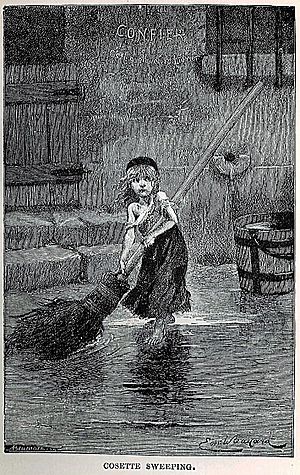
Hugo started planning a major novel about poverty and injustice in the 1830s. It took him 17 years to finish Les Misérables, which was finally published in 1862. Hugo knew how good the novel was, so he sold the publishing rights to the highest bidder. The Belgian publisher Lacroix and Verboeckhoven did a big marketing campaign, which was unusual at the time. They released news about the book six months before it came out. They also first published only the first part of the novel, called “Fantine,” in many cities at once. Copies of the book sold out in hours and had a huge impact on French society. Even though some critics didn't like it, Les Misérables was very popular with ordinary people. The issues it talked about were soon discussed in the French government. Today, it is still his most popular work. It is famous worldwide and has been made into movies, TV shows, and stage musicals.
There's a famous story about the shortest message ever sent between Hugo and his publisher, Hurst & Blackett, in 1862. When Les Misérables (which is over 1200 pages long) was published, Hugo was on vacation. He supposedly sent a telegram with just one character: '?'. His publisher replied with just one character: '!'.
In his next novel, Les Travailleurs de la Mer (Toilers of the Sea), published in 1866, Hugo wrote about different topics, moving away from social or political issues. This book was also well-received, probably because Les Misérables had been so successful. The book was dedicated to the island of Guernsey, where Hugo lived in exile for fifteen years. His story about a man's fight with the sea and its creatures started a strange trend in Paris: squids! Parisians became fascinated by these sea creatures, with squid dishes, exhibitions, hats, and parties.
Hugo returned to political and social issues in his next novel, L'Homme Qui Rit (The Man Who Laughs), published in 1869. This book criticized the rich and powerful. However, it was not as successful as his earlier works. Hugo noticed that his writing style was becoming less popular than the new "realist" and "naturalist" novels by writers like Flaubert and Émile Zola. His last novel, Quatre-vingt-treize (Ninety-Three), published in 1874, was about the Reign of Terror during the French Revolution, a topic Hugo had avoided before.
Political Life and Exile
After three tries, Hugo was finally elected to the Académie française in 1841. This confirmed his important place in French arts and literature. Some French scholars had tried to stop his election because they didn't like the "romantic evolution" in writing. After this, he became more and more involved in French politics. King Louis Philippe I made him a noble in 1841, and he joined the Higher Chamber of Parliament. There, he spoke out against the death penalty and social injustice. He also supported freedom of the press and self-government for Poland.
Hugo also started to support a republican government more and more. After the European Revolutions of 1848 and the start of the French Second Republic, he was elected to the government.
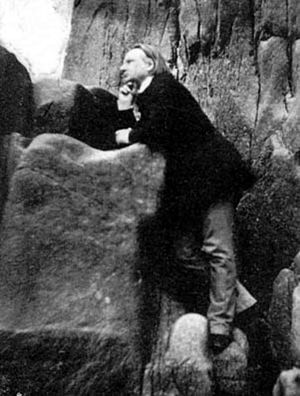
When Louis Napoleon (who became Napoleon III) took complete power in 1851 and created an anti-parliamentary government, Hugo openly called him a traitor to France. Hugo moved to Brussels, then Jersey, and finally settled with his family on the island of Guernsey at Hauteville House. He lived there in exile until 1870.
While in exile, Hugo published famous political writings against Napoleon III, called Napoléon le Petit and Histoire d'un crime. These writings were banned in France but still had a strong impact. He also wrote some of his best works during his time in Guernsey, including Les Misérables and three highly praised poetry collections: Les Châtiments (1853), Les Contemplations (1856), and La Légende des siècles (1859).
Hugo even convinced the government of Queen Victoria to save the lives of six Irish people who had been found guilty of terrorist acts. His influence also helped remove the death penalty from the laws of Geneva, Portugal, and Colombia. He also asked Benito Juárez to spare the captured emperor Maximilian I of Mexico, but it didn't work.
Even though Napoleon III offered to forgive all political exiles in 1859, Hugo refused. He didn't want to stop criticizing the government. It was only after Napoleon III lost power and the French Third Republic was declared that Hugo finally returned to France in 1870. He was quickly elected to the National Assembly and the Senate.
He was in Paris during the siege by the Prussian army in 1870. He famously ate animals from the Paris zoo. As food became very scarce, he wrote in his diary that he was eating "the unknown."
Because he cared about the rights of artists and copyright, he helped start the International Literary and Artistic Association. This group led to the Berne Convention for the Protection of Literary and Artistic Works, an international agreement that protects authors' rights.
Victor Hugo's Religious Views
Hugo's religious beliefs changed a lot during his life. When he was young, he considered himself a Catholic and respected the Church. Later, he became less involved with the Catholic Church and started to express anti-Catholic views. During his exile, he became interested in Spiritualism, even taking part in séances. In his later years, he believed in Deism, which is a belief in a God who created the universe but does not interfere with it. This was similar to the views of Voltaire. In 1872, when asked if he was Catholic, Hugo replied, "No. A Freethinker."
Hugo never liked the Roman Catholic Church. He felt the Church didn't care about the struggles of working-class people under the monarchy. Also, many of his books, including Les Misérables, were put on the Pope's list of "forbidden books" (Hugo counted 740 attacks on Les Misérables in Catholic newspapers). When his sons Charles and François-Victor died, he insisted they be buried without a cross or a priest. He made the same request for his own funeral in his will. However, even though Hugo thought Catholic beliefs were old-fashioned, he never directly attacked the Church itself.
Hugo's rationalist views can be seen in poems like Torquemada (1869), which is about extreme religious belief. The Pope (1878) is against the power of the clergy. Religions and Religion (1880) questions the usefulness of churches. After his death, The End of Satan and God were published. In these, he shows Christianity as a mythical creature and Rationalism as an angel.
Victor Hugo and Music
Even though Hugo wasn't a great musician himself, he had a huge impact on the music world. His works inspired many composers in the 19th and 20th centuries. Hugo enjoyed the music of Gluck and Weber, and he greatly admired Beethoven. He also liked older composers like Palestrina and Monteverdi, which was unusual for his time.
Two famous musicians of the 19th century were friends with Hugo: Berlioz and Liszt. Liszt played Beethoven's music at Hugo’s home. Hugo even joked in a letter that thanks to Liszt’s piano lessons, he learned to play a favorite song with just one finger! Hugo also worked with composer Louise Bertin, writing the story for her 1836 opera La Esmeralda. This opera was based on a character from The Hunchback of Notre Dame.
Over a thousand musical pieces have been inspired by Hugo’s works since the 1800s. Many composers adapted Hugo’s plays into operas. More than one hundred operas are based on his works. These include Donizetti’s Lucrezia Borgia (1833), Verdi’s Rigoletto (1851) and Ernani (1844), and Ponchielli’s La Gioconda (1876).
Hugo’s novels and plays have also inspired not only opera and ballet, but also musical theater. Examples include Notre-Dame de Paris and the very popular Les Misérables, which is London’s longest-running musical in the West End. Many composers have also set Hugo’s beautiful poems to music, including Berlioz, Bizet, Fauré, Liszt, Massenet, Saint-Saëns, Rachmaninov, and Wagner.
Today, Hugo’s work continues to inspire new music. For example, his novel against the death penalty, The Last Day of a Condemned Man, was recently made into an opera. In Guernsey, the Victor Hugo International Music Festival happens every two years. It features many musicians and new songs based on Hugo’s poetry.
Later Years and Death

When Hugo returned to Paris in 1870, people saw him as a national hero. Despite his popularity, Hugo lost his attempt to be re-elected to the National Assembly in 1872. Around this time, he also faced many personal losses. He had a mild stroke, his daughter Adèle was admitted to a mental hospital, and his two sons died. His wife Adèle had died in 1868. His loyal companion, Juliette Drouet, died in 1883, just two years before he did. Even with all these personal struggles, Hugo remained dedicated to political change. On January 30, 1876, Hugo was elected to the new Senate. However, his last years in politics were not very successful.
In February 1881, Hugo celebrated his 79th birthday. To honor him entering his eightieth year, one of the biggest tributes ever for a living writer was held. The celebrations began on the 25th when he received a special vase, a traditional gift for kings. On the 27th, one of the largest parades in French history took place. Marchers stretched from Avenue d'Eylau, down the Champs-Élysées, all the way to the center of Paris. The parade lasted six hours as people marched past Hugo, who sat in the window of his house. Everything about the event was for Hugo; even the official guides wore cornflowers, a reference to a song by Cosette in Les Misérables.
Hugo died on May 22, 1885, in Paris, France, from an infection. He was 83 years old. His death caused great national sadness. He was admired not only as a great writer but also as a statesman who helped shape the French Third Republic and democracy in France. More than two million people joined his funeral procession in Paris, walking from the Arc de Triomphe to the Panthéon, where he was buried. He shares a tomb there with Alexandre Dumas, père and Émile Zola. Most large French towns and cities have a street named after him. The avenue where he died in Paris is now named after him.
Victor Hugo's Drawings
Many people don't know that Hugo was almost as talented in art as he was in writing. He created more than 4,000 drawings in his lifetime. At first, drawing was just a hobby. But it became more important to Hugo just before his exile, when he decided to stop writing to focus on politics. Drawing became his only creative outlet between 1848 and 1851.
Hugo only drew on paper and on a small scale. He usually used dark brown or black pen-and-ink wash, sometimes with touches of white, and rarely with color. His surviving drawings are surprisingly skilled and "modern" in their style. They even seem to predict later art styles like Surrealism and Abstract Expressionism.
He wasn't afraid to use unusual methods. He would use his children's stencils, ink blots, puddles, and stains. He also used lace impressions, folding paper (like for Rorschach tests), and rubbing techniques. He often used charcoal from matchsticks or his fingers instead of a pen or brush. Sometimes he even added coffee or soot to get the effects he wanted. It's said that Hugo often drew with his left hand or without looking at the page, or during Spiritualist séances. He did this to access his unconscious mind, an idea that Sigmund Freud later made famous.
Hugo kept his artwork private, fearing it would overshadow his literary work. However, he enjoyed sharing his drawings with family and friends. He often made fancy handmade calling cards with his drawings, giving them as gifts to visitors during his political exile. Some of his work was shown to and appreciated by artists like Van Gogh and Delacroix. Delacroix even said that if Hugo had chosen to be a painter instead of a writer, he would have been more famous than other artists of their century.
Memorials to Victor Hugo
The people of Guernsey built a statue in Candie Gardens (St. Peter Port) to remember his time on the islands. The City of Paris has kept his homes Hauteville House in Guernsey and 6, Place des Vosges as museums. The house where he stayed in Vianden, Luxembourg, in 1871 has also become a museum.
Hugo is honored as a saint in the Vietnamese religion of Cao Dai.
The Avenue Victor-Hugo in Paris is named after him. It connects the Place de l'Étoile to the Bois de Boulogne. There is also a Paris Métro stop named Victor Hugo. Many streets and avenues across France are also named after him. The school Lycée Victor Hugo was founded in his hometown of Besançon. Avenue Victor-Hugo in Shawinigan, Quebec, Canada, was named to honor him.
In the city of Avellino, Italy, Victor Hugo briefly stayed in a building now known as Il Palazzo Culturale in 1808, when he met his father. Victor later wrote about his short stay there, saying, "It was a marble palace..." In Edinburgh, Scotland, there is a deli called Victor Hugo Delicatessen. It was originally run by a French couple but was bought in 2005. The shop is on Melville Terrace, near the University of Edinburgh.
Works by Victor Hugo
Published during his lifetime
- Odes et poésies diverses (1822)
- Odes (Hugo) (1823)
- Han d'Islande (1823) (Hans of Iceland)
- Nouvelles Odes (1824)
- Bug-Jargal (1826)
- Odes et Ballades (1826)
- Cromwell (1827)
- Les Orientales (1829)
- Le Dernier jour d'un condamné (1829) (The Last Day of a Condemned Man)
- Hernani (1830)
- Notre-Dame de Paris (1831), (The Hunchback of Notre Dame)
- Marion Delorme (1831)
- Les Feuilles d'automne (1831)
- Le roi s'amuse (1832)
- Lucrèce Borgia (1833) (Lucretia Borgia)
- Marie Tudor (1833)
- Claude Gueux (1834)
- Angelo, tyran de padoue (1835)
- Les Chants du crépuscule (1835)
- La Esmeralda (only libretto of an opera written by Victor Hugo himself) (1836)
- Les Voix intérieures (1837)
- Ruy Blas (1838)
- Les Rayons et les ombres (1840)
- Le Rhin (1842)
- Les Burgraves (1843)
- Napoléon le Petit (1852)
- Les Châtiments (1853)
- Les Contemplations (1856)
- La Légende des siècles (1859)
- Les Misérables (1862)
- William Shakespeare (1864)
- Les Chansons des rues et des bois (1865)
- Les Travailleurs de la Mer (1866), (Toilers of the Sea)
- L'Homme qui rit (1869), (The Man Who Laughs)
- L'Année terrible (1872)
- Quatrevingt-treize (Ninety-Three) (1874)
- Actes et paroles — Avant l'exil (1875)
- Actes et paroles - Pendant l'exil (1875)
- Actes et paroles - Depuis l'exil (1876)
- La Légende des Siècles 2e série (1877)
- L'Art d'être grand-père (1877)
- Histoire d'un crime 1re partie (1877)
- Histoire d'un crime 2e partie (1878)
- Le Pape (1878)
- La pitié suprême (1879)
- Religions et religion (1880)
- L'Âne (1880)
- Les Quatres vents de l'esprit (1881)
- Torquemada (1882)
- La Légende des siècles Tome III (1883)
- L'Archipel de la Manche (1883)
Published after his death
- Théâtre en liberté (1886)
- La fin de Satan (1886)
- Choses vues (1887)
- Toute la lyre (1888)
- Amy Robsart (1889)
- Les Jumeaux (1889)
- Actes et Paroles Depuis l'exil, 1876-1885 (1889)
- Alpes et Pyrénées (1890)
- Dieu (1891)
- France et Belgique (1892)
- Toute la lyre - dernière série (1893)
- Les fromages (1895)
- Correspondences - Tome I (1896)
- Correspondences - Tome II (1898)
- Les années funestes (1898)
- Choses vues - nouvelle série (1900)
- Post-scriptum de ma vie (1901)
- Dernière Gerbe (1902)
- Mille francs de récompense (1934)
- Océan. Tas de pierres (1942)
- L'Intervention (1951)
- Conversations with Eternity
Images for kids
-
The funeral carriage of Victor Hugo under the Arc de Triomphe on June 1, 1885.
-
Marble bust of Victor Hugo by Auguste Rodin.
See also
 In Spanish: Victor Hugo para niños
In Spanish: Victor Hugo para niños








